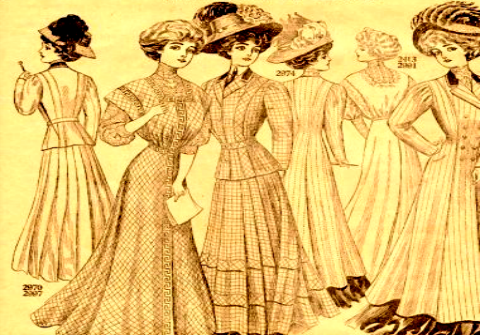
commons.wikimedia.org
Sexual harassment is the pits. And as it unfortunately turns out, the deviant desire to cat call, taunt, grope and generally act like a miserable misogynist transcends the space-time continuum. Women have tried various strategies to fend off such behavior through the ages, but one trend during the turn-of-the-century reveals a creative, and sometimes overzealous, tactic for—literally—sticking it to lecherous men. The so-called “Hatpin Peril” led ladies to use their own decorative accessories to fend off unwanted advances.
In the Victorian era, female decorum and reliance on men were de rigeur. But by the cusp of the 20th century, some women were done with the antiquated expectations. Increasingly, ladies came to the conclusion that the time for a stiff upper lip when encountering “mashers”—period slang for predatory men in public—was over. Newspapers across the country started reporting physical retaliations against the street-side skeezes:
"A New York City housewife fended off a man who brushed up against her on a crowded Columbus Avenue streetcar and asked if he might “see her home.” A Chicago showgirl, bothered by a masher’s “insulting questions,” beat him in the face with her umbrella until he staggered away. A St. Louis schoolteacher drove her would-be attacker away by slashing his face with her hatpin." —Karen Abbott, Smithsonian
Victorian temperance be damned! In addition to their frequency, news reports covering these encounters were notable for their approving tone. While a woman attacking a man had previously been considered comical (silly, silly women!), these female fighters were now praised as heroes with the righteous ability to defend themselves. Social mores, they were a’changing.
Working women and suffragists co-opted the phenomenon into their broader call for women’s rights, including the ability to break out of the confines of parents' or husbands' homes, ditch chaperones, and move alone and unharassed in public.
At this point, one might expect serious push-back from harbingers of tradition. But surprisingly, most people seemed to see the writing on the wall for women’s increasing freedoms. Instead, detractors focused on deriding the most high-profile mechanism of lady self-defense (or in some cases, probably misguided assaults): the hatpin. Both unconfirmed and verified stories of hatpin-peril abounded. Innocent men were accidentally stabbed by careless women. A hundred female factory workers wielded hatpins at police officers who had arrested two of their coworkers. A woman and her husband’s mistress even circled each other in a high-stakes hatpin duel until police broke it up.
One woman’s tool of self-defense was another woman’s weapon.
By 1910, the situation (weirdly) looked not unlike the current gun-control debate. City councils in Chicago, Milwaukee, Pittsburgh, Baltimore, New Orleans and even as far away as Sydney, Australia, started passing ordinances to regulate hatpin length. Many women rebuffed such interference, with some opting to go to jail rather than pay fines for their pins o’ protection.
Who knows how the hatpin controversy may have continued to escalate, had World War I not swooped in to distract social preoccupation and inspire new fashion. Yes, the menacing hatpin was laid to rest as bobs and cloche hats became the new trend—probably for the best. Happily, women remained generally able to move independently in public, though sexual harassment has more-than-endured.
Perhaps it's time to bring back the hatpin?






